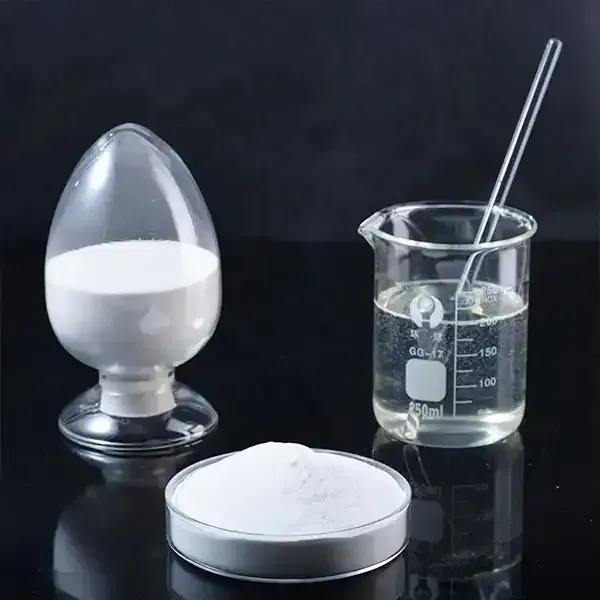The Importance and Versatility of Cellulose Ethers
Cellulose ethers are a cornerstone of modern materials science, utilized across a diverse array of industries ranging from food production to pharmaceuticals, construction, and personal care products. Derived from cellulose, the most abundant organic polymer on Earth, these compounds demonstrate remarkable properties that make them invaluable for various applications. In this article, we will explore the nature, functionality, and significance of cellulose ethers.
Understanding Cellulose Ethers
Cellulose ethers are semi-synthetic polymers created by chemically modifying cellulose to introduce ether groups. This modification significantly transforms the properties of cellulose, allowing for enhanced solubility in water and organic solvents, better film-forming abilities, and improved rheological (flow) characteristics. Common types of cellulose ethers include hydroxypropyl methylcellulose (HPMC), carboxymethyl cellulose (CMC), and methylcellulose (MC), each with unique features that cater to different needs.
Applications in the Food Industry
In the food industry, cellulose ethers play a critical role as thickening agents, stabilizers, and emulsifiers. For instance, carboxymethyl cellulose is frequently used in ice creams and salad dressings to prevent crystallization and improve texture. Hydroxypropyl methylcellulose is also utilized as a dietary fiber supplement and can enhance the moisture retention in baked goods. Their safety and functionality make cellulose ethers a preferred choice for food manufacturers aiming to enhance product quality while adhering to health regulations.
Pharmaceutical Applications
The pharmaceutical sector has widely adopted cellulose ethers due to their biocompatibility and ability to control drug release. Hydroxypropyl methylcellulose, for instance, is often used as a binder in tablet formulations and as a coating material to modify the release profile of active pharmaceutical ingredients (APIs). The versatility of cellulose ethers allows for tailored drug delivery systems that improve efficacy and reduce side effects, leading to better patient outcomes.
cellulose ethers

Construction and Building Materials
The construction industry also benefits significantly from cellulose ethers. They are commonly added to cement, mortars, and tile adhesives to enhance workability, water retention, and adhesion. Methylcellulose, for example, can improve the application properties of dry-mix formulations, providing better performance and longer open times for construction workers. This application helps create stronger and more durable structures while also boosting the efficiency of building processes.
Cosmetics and Personal Care Products
In the realm of cosmetics and personal care products, cellulose ethers serve numerous functions, including thickening, gelling, and stabilizing agents. They contribute to the texture and consistency of creams, lotions, and gels, enhancing consumer satisfaction. Hydroxypropyl methylcellulose is often used in shampoos and conditioners to provide improved spreading and conditioning effects. Additionally, cellulose ethers are valued for their ability to form a film on the skin, providing moisturizing benefits without a greasy feel, making them popular in a variety of cosmetic formulations.
Environmental Concerns and Sustainability
Sustainability is a growing concern in all industries, and the production and use of cellulose ethers align with environmental considerations. Being derived from plant-based cellulose, these materials can be considered renewable and biodegradable, offering an eco-friendlier alternative to synthetic polymers. The ongoing research and innovation in cellulose ether production highlight their potential to further minimize environmental impact while meeting consumer demands for sustainability.
Conclusion
Cellulose ethers are versatile materials that bridge the gap between natural resources and modern technological applications. Their unique properties cater to a wide range of needs across various sectors, contributing to product innovation and quality improvements. As industries continue to seek sustainable solutions, cellulose ethers will play an increasingly significant role in developing eco-friendly products. Their importance in everyday items—from food to pharmaceuticals and construction materials—underscores the necessity of exploring and harnessing these remarkable compounds for future innovations. As research in cellulose chemistry advances, we can expect even more creative applications for cellulose ethers, further solidifying their place in modern society.
-
The Application and Significance of Construction RdpNewsMay.19,2025
-
Industrial Grade HpmcNewsMay.19,2025
-
Building Coating Adhesive Building Coating Adhesive HpmcNewsMay.19,2025
-
Application Of Hpmc For Detergent For Detergent In DetergentsNewsMay.19,2025
-
Application Of Hpmc Cellulose In Cement-Based MaterialsNewsMay.19,2025
-
Application Of High Quality Hpmc For Construction In The Field Of ConstructionNewsMay.19,2025




